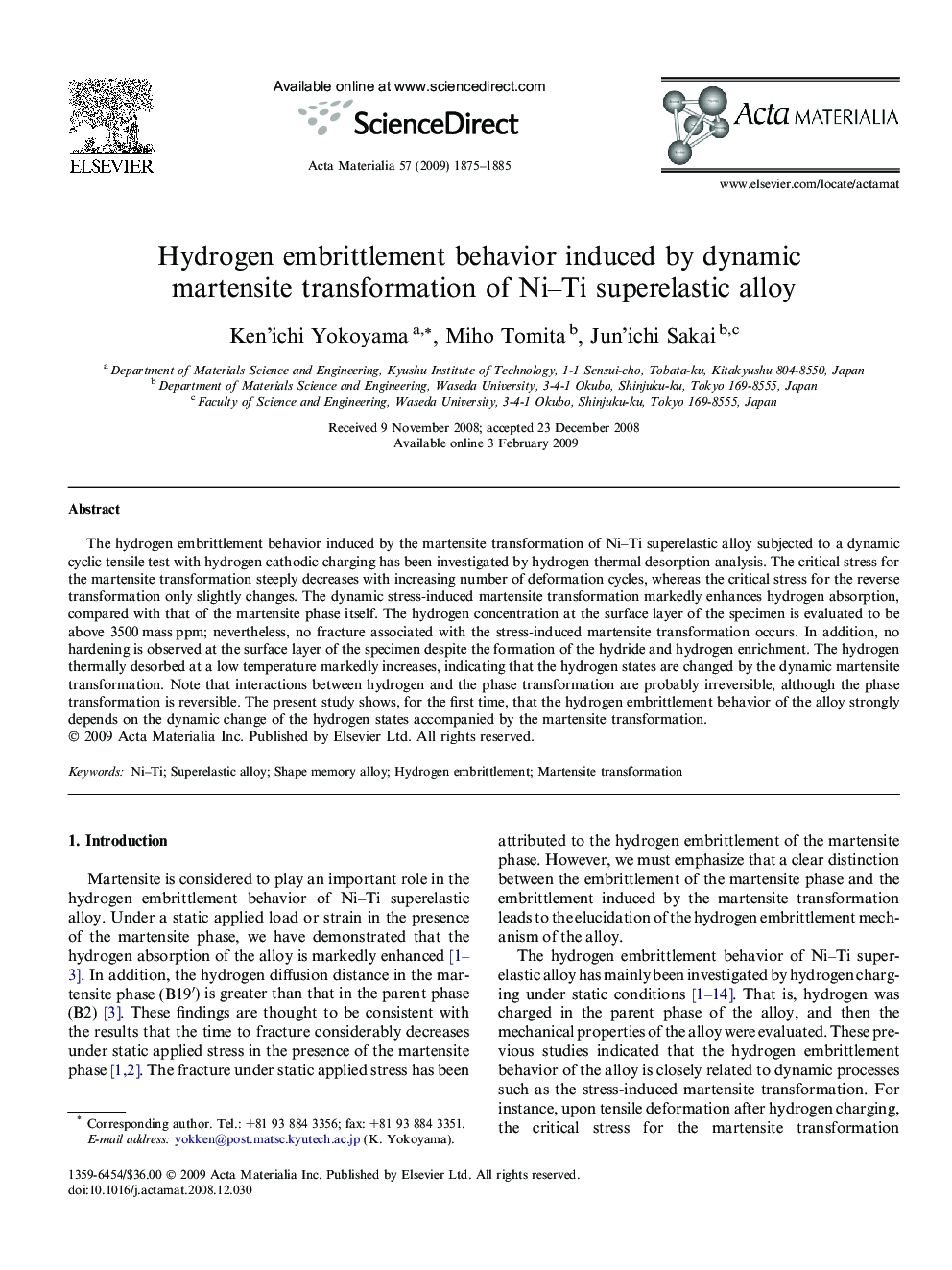| Article ID | Journal | Published Year | Pages | File Type |
|---|---|---|---|---|
| 10620788 | Acta Materialia | 2009 | 11 Pages |
Abstract
The hydrogen embrittlement behavior induced by the martensite transformation of Ni-Ti superelastic alloy subjected to a dynamic cyclic tensile test with hydrogen cathodic charging has been investigated by hydrogen thermal desorption analysis. The critical stress for the martensite transformation steeply decreases with increasing number of deformation cycles, whereas the critical stress for the reverse transformation only slightly changes. The dynamic stress-induced martensite transformation markedly enhances hydrogen absorption, compared with that of the martensite phase itself. The hydrogen concentration at the surface layer of the specimen is evaluated to be above 3500 mass ppm; nevertheless, no fracture associated with the stress-induced martensite transformation occurs. In addition, no hardening is observed at the surface layer of the specimen despite the formation of the hydride and hydrogen enrichment. The hydrogen thermally desorbed at a low temperature markedly increases, indicating that the hydrogen states are changed by the dynamic martensite transformation. Note that interactions between hydrogen and the phase transformation are probably irreversible, although the phase transformation is reversible. The present study shows, for the first time, that the hydrogen embrittlement behavior of the alloy strongly depends on the dynamic change of the hydrogen states accompanied by the martensite transformation.
Related Topics
Physical Sciences and Engineering
Materials Science
Ceramics and Composites
Authors
Ken'ichi Yokoyama, Miho Tomita, Jun'ichi Sakai,
